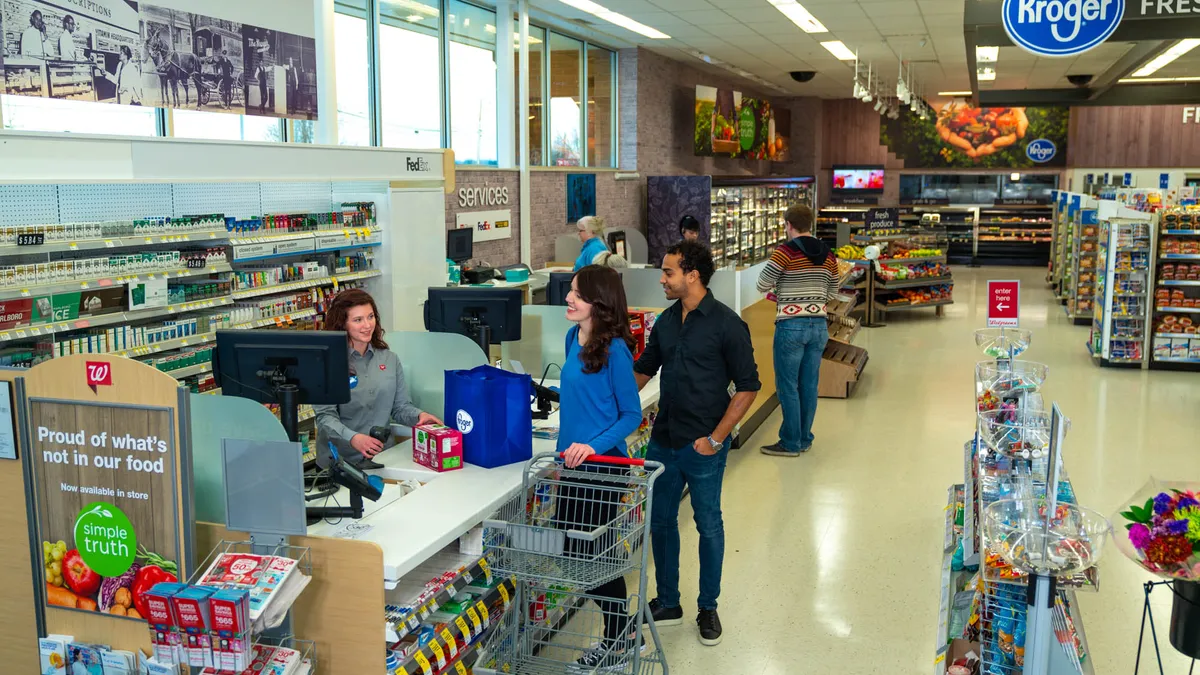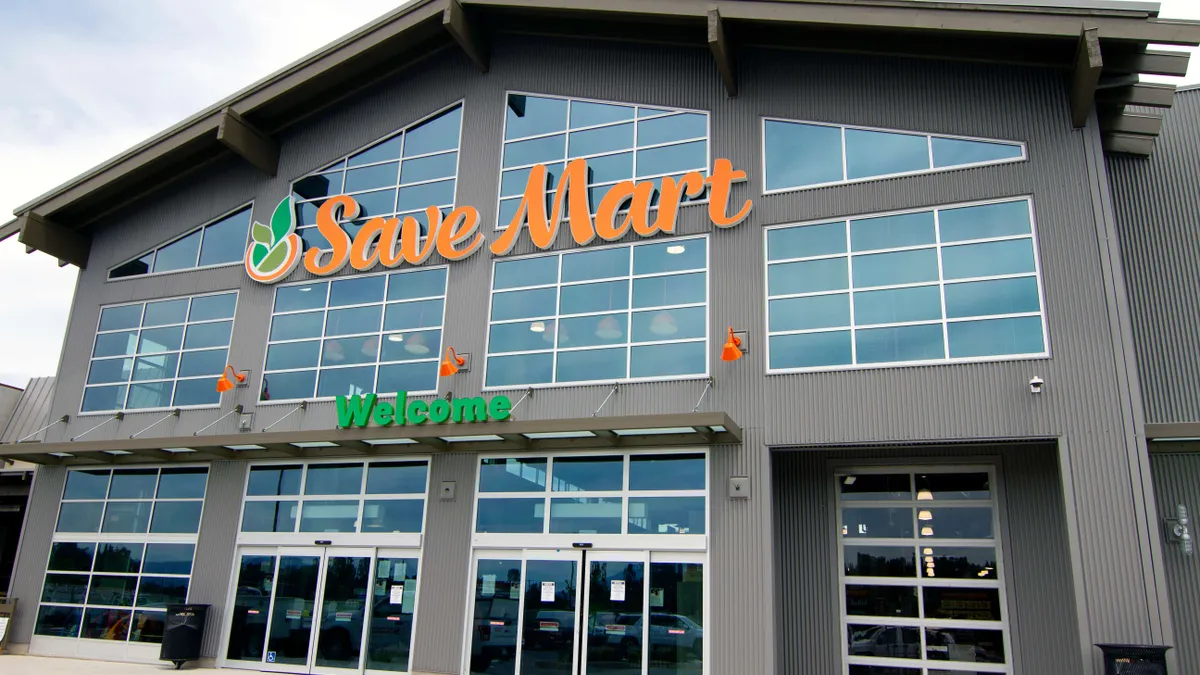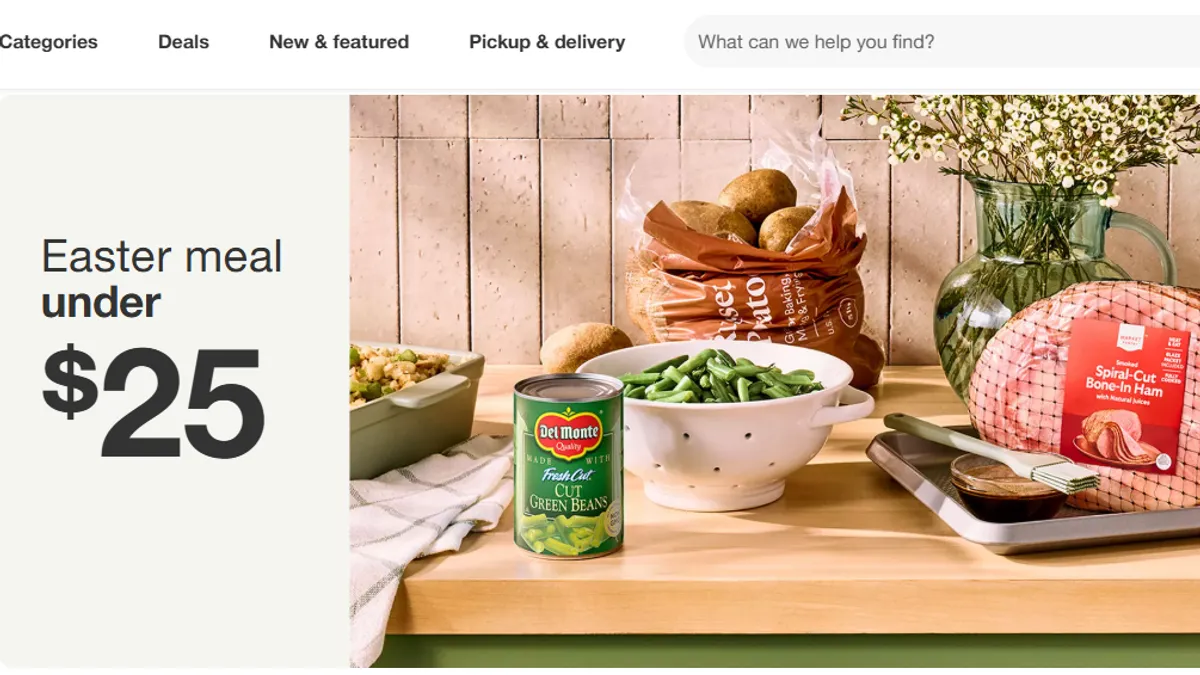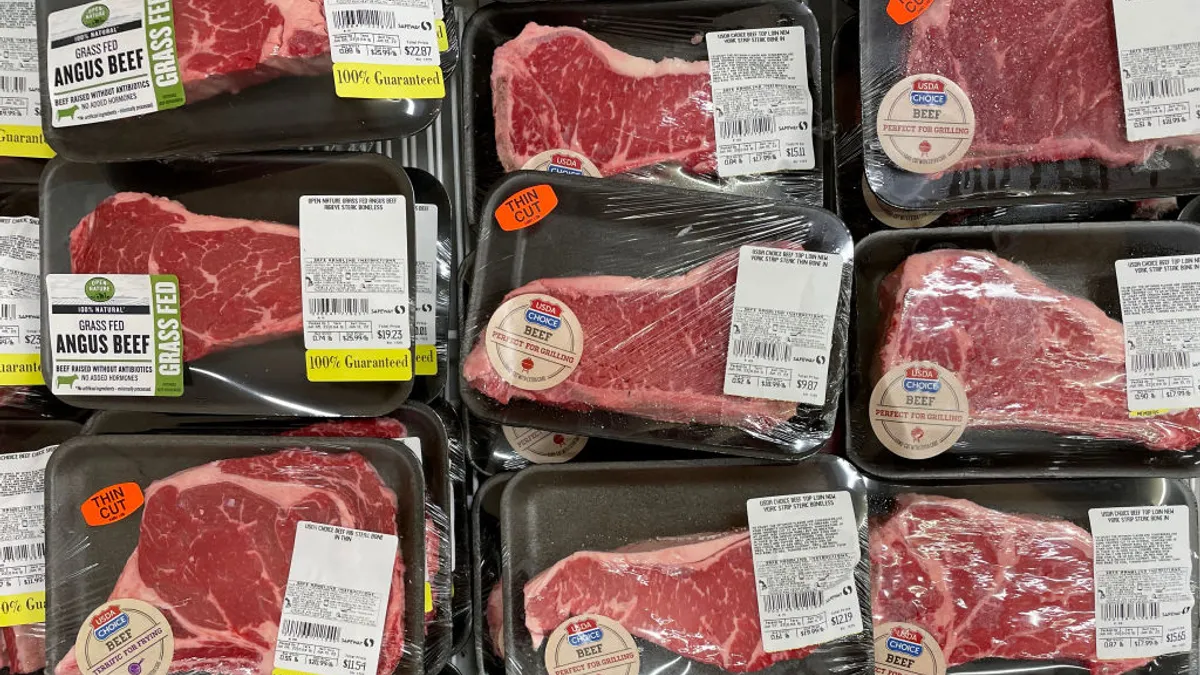Pardon the Disruption is a column from Grocery Dive that looks at the forces shaping food retail.
Grocers are building smaller and smaller stores these days, but what if they went really small?
Last week, Kroger announced it had tucked a grocery department inside a Walgreens store in northern Kentucky. Stocked with more than 2,000 items, including fresh produce and cold cuts, this "Kroger Express" mini market is one of a handful the grocer plans to open over the next few months inside Walgreens locations near its Cincinnati headquarters. If the locations prove successful, a lot more people will be buying meal kits and bananas at the same place they buy cold medicine.
A lot of the discussion following the announcement focused on how the deal would work in terms of coordinating assortment, logistics and so on between the two companies, and whether or not the partnership will eventually pay off for Kroger. The country's largest grocer has been wheeling and dealing a lot this year as it seeks to transcend the pressures raining down on conventional grocers right now.
What struck me about the deal, though, was why more grocers haven't opened store-within-a-store concepts like this. The interest in selling food across retail channels has never been higher. You can get a bottle of water and beef jerky at your local office supplies store, prepared foods at 7-Eleven or a full cart of groceries at Bed Bath & Beyond. Famished after a gym workout? Grab a salad and a smoothie to go.
This fragmenting food market has taken a hefty toll on supermarket sales. So why not partner up with these retailers rather than try to compete with them?
You better believe the likes of Kroger and Aldi can do a better job at grocery than Walgreens or Home Depot could on their own. The offering could be as small as a branded aisle or an endcap, or as large as a 4,000-square-foot Kroger Express. With so many distinct and top-quality private label products out there now, grocers can offer more value than ever for partner retailers, while also driving traffic back to their stores and websites.
With pretty much all of the prime grocery real estate in the U.S. claimed and consolidation too costly for many operators, micro markets also offer a cost-effective way for grocers of all sizes to grow their footprint.
The idea of taking a shrinking ray to their assortment and linking up with other retailers probably sounds outlandish to most supermarket executives. But consumers and nonfood retailers have certainly warmed up to the idea. Just look at Best Buy, which offers sections within its stores dedicated to Google and Apple products, or at Kohl's, which sells Amazon gadgets and takes product returns from the e-tailer. Both companies have seen traffic spike as a result of these unconventional partnerships.
Grocers aren't limited to partnering with other retailers. The better opportunity, in fact, may be in placing micro markets inside neutral locations like office buildings, airports and hospitals — places where consumers are already looking for a meal and could end up buying some groceries, too.
As the food-as-medicine movement continues to evolve, produce departments could become a welcome prescription for hospitals. Basics Market, a grocery venture started by the founder of Pacific Foods and the former grocery lead for Whole Foods, just opened its first location on the ground floor of The Portland Clinic in Portland, Oregon. The grocer doesn't have a formal relationship with the clinic, co-founder Chuck Eggert told me, but it will refer patients with special dietary needs to the health-focused market.
Meanwhile, according to Brittain Ladd, a former Amazon executive who now works as an industry consultant, offices represent an untapped opportunity for grocers and other food sellers. In addition to on-site sales, companies have the opportunity to deliver groceries to workspaces, filling break rooms and helping employees tick off their personal grocery lists.
Companies, he told me recently, should "take advantage of the density of consumers that work daily in large office buildings, office complexes and even hospitals. Everything related to the cost of logistics, including last mile delivery, would be reduced if consumers were able to receive packages and groceries at their places of business … because coworkers would learn to collaborate on shopping and coordinate deliveries to reduce each other's costs."
Some companies are starting to see this opportunity. Byte Foods, a San Francisco startup, has put smart fridges offering fresh foods, meal kits and more inside over 600 corporate office locations. Trendy restaurant chain Sweetgreen is also muscling into the market with a new program called Outposts that delivers fresh salads to kiosks located inside office complexes. Nike and Live Nation are among the companies that have signed on to the chain's pilot program.
A few other grocers are moving into micro markets, too. Green Zebra Grocery, the West Coast specialty-convenience hybrid, plans to build 200 stores and 200 "micro Zebras" in office buildings and other establishments over the next several years. The test shop for these locations, slated to open in January at a WeWork office space in Portland, Oregon, will feature pre-made salads, sandwiches, beverages and nutrition bars. Checkout will be conducted on the honor system via an iPad or phone app, though a camera will monitor each transaction, CEO and founder Lisa Sedlar recently told Grocery Dive.
A new Green Zebra Grocery store costs about $1.5 million to build, while a micro Zebra — which only requires some shelving and a refrigeration unit — costs just $7,500.
In Pennsylvania, local grocer The Butcher Shoppe operates a micro market inside the local Chambersburg Hospital that offers snacks, grab-and-go foods and beverages. The location, which is staffed during the day and offers self-checkout the rest of the time, saw sales volume three times bigger than what it anticipated when it opened back in August.
In addition to showing the potential in micro markets, The Butcher Shoppe proves the opportunity isn't just for large chains. The hometown grocer has one store that's been open for more than 60 years and five micro markets that, along with the hospital location, include three automated markets inside office buildings and one location inside a library.
Competition is one headwind to growth in micro markets. In addition to Byte Foods and Sweetgreen are the legions of mini marts, vending machines, corporate caterers and kiosks already serving office buildings, hospitals and airports. There's even more tough competition on the horizon. Amazon Go, most notably, is targeting corporate workers with its selection of grab-and-go meals and snacks and could eventually expand to 3,000 locations in the coming years, according to reports. Reuters reported that Amazon is looking into putting Go stores in several of the country's largest airports.
In addition to stiff competition, supply chains would have to be altered, assortments whittled down and unfamiliar lease deals worked out. How big should a branded grocery store inside a department store be? What products should they offer and how often should they rotate them? The unfamiliarity of the market means grocers would have to test and learn, which can be expensive. There's no blueprint for operating an Aldi inside a corporate office tower.
Still, with so many industry pressures squeezing supermarkets, operators have to think creatively if they want to grow. And despite all the competition out there, the fact remains, nobody handles food better than supermarkets.
Suddenly, going small seems like a very big opportunity.





















